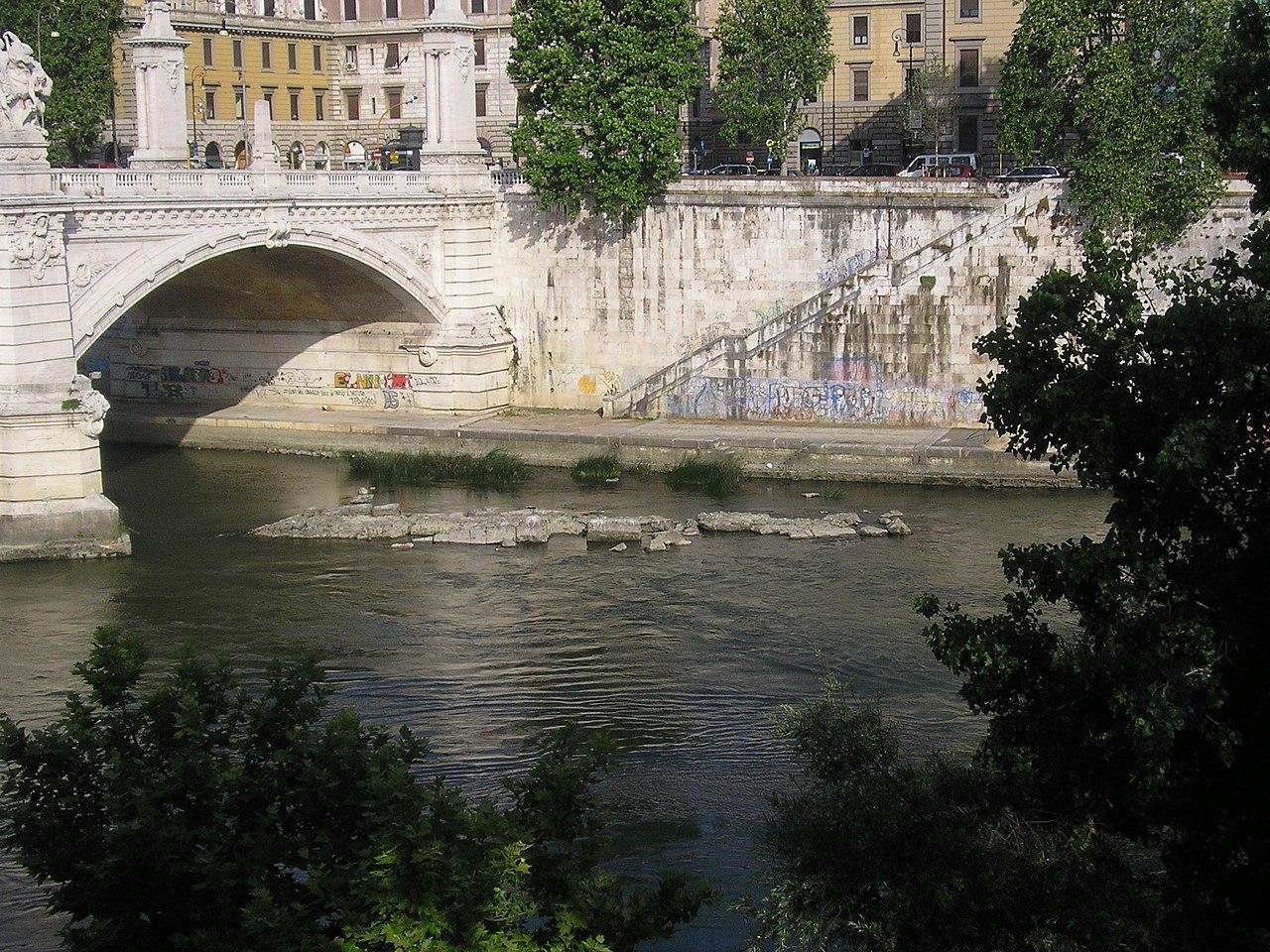Severe drought and dropping Tiber water levels have uncovered an archaeological treasure in Rome: The stone remains of the Bridge of Nero.
Every region of the world is combating its own battle against climate change. While the rainy season flooded some areas, Italy has been struggling with severe drought for the past month. People are lining up to cool themselves at the numerous fountains and drinking fountains in the capital of Italy, which has been experiencing highs of 40 degrees Celsius (104 degrees Fahrenheit).
Rivers and reservoirs are rapidly drying up across Italy as a result of the current drought, in addition to record-high temperatures. According to a recent report by WION, compared to this time last year, the water levels of the river have reportedly dwindled by about one meter.
 Remains of Neronian Bridge in Rome, Italy. Credit: ColdShine, Wikimedia Commons
Remains of Neronian Bridge in Rome, Italy. Credit: ColdShine, Wikimedia Commons
Drought and dropping Tiber water levels, which according to Reuters is at multi-year lows, have uncovered an archaeological treasure in Rome: the stone remains of the Pons Neronianus (Latin for the Bridge of Nero).
For those who don’t know, Emperor Nero was the fifth Roman emperor and final emperor of the Julio-Claudian dynasty, reigning from CE 54 until his death in CE 68. He was adopted by the Roman emperor Claudius at the age of 13 and succeeded him on the throne. He became known for his personal debaucheries and extravagances and, on doubtful evidence, for his burning of Rome and persecutions of Christians. He killed himself at the age of 30, after he was declared the public enemy by the Roman Senate.
Multiple sources told Live Science that the bridge was possibly built before Nero’s rule. Live Science quoted Robert Coates-Stephens, who is an archaeologist at the British School at Rome, as saying, “The remains of this Roman bridge are visible whenever the water level of the Tiber falls, therefore whenever there are lengthy periods — like now — of very low rainfall.” The report further mentioned that it is not certain if the bridge was built by Emperor Nero.
This is after the science news website quoted Nicholas Temple, who is a professor of architectural history at London Metropolitan University, as saying, “The origins of the bridge are uncertain, given that it is likely a bridge existed here before Nero’s reign and therefore the Pons Neronianus was probably a reconstruction of an earlier crossing.”
Temple argued that the bridge did have some military and religious significance for Rome. “The Pons Neronianus was strategically and symbolically significant,” Temple said to Live Science. One side of the bridge was located near an area where Roman troops would ᴀssemble to march in a triumph (a politically and religiously significant victory parade) and was likely part of the parade route. “The precise route of this procession is uncertain but it seems probable that the Pons Neronianus [and any bridge that preceded it] served as the bridge crossing for this purpose,” Temple said.
Cautioning about the drought previously, Rome Mayor Roberto Gualtieri emphasized that, while there is no plan for water rationing, citizens must avoid water waste. According to a recent report by the news agency Reuters, the country’s irrigation authority warned that drought conditions are rapidly spreading through Italy, with many rivers and reservoirs drying up.





